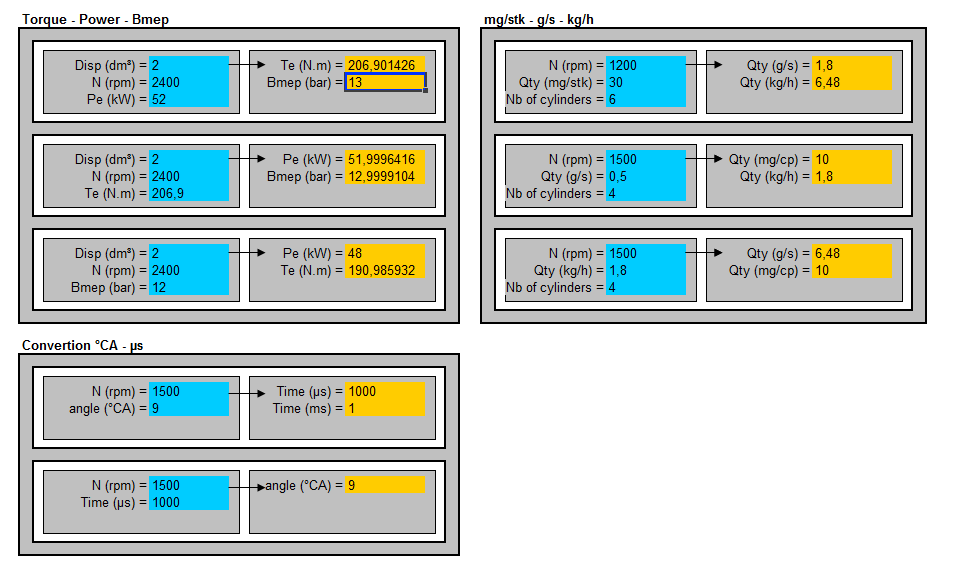Electronically Controlled 4WD
The electronically controlled 4WD system comes in three modes which can be chosen according to the driver’s preferences and the driving conditions. The front and rear torque distribution mechanism uses electronically controlled coupling to distribute the torque between the front and rear wheels appropriately at all times with feedforward control, based on the accelerator pedal position and vehicle speed, vehicle driving conditions and the operation by the driver, etc. Furthermore, it ensures outstanding traction performance while at the same time eliminating the tight corner braking phenomenon characteristic of 4WDs.Drivers can switch between 4WD auto mode, 4WD lock mode and 2WD mode instantly and while driving the vehicle. All that is required is a single touch of the drive mode selector dial on the console.
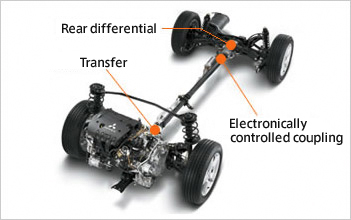
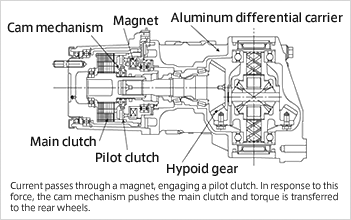
Advantages of the Driving Modes
4 WD Auto Mode
 Driving force is distributed appropriately to the front and rear wheels according to road surface and driving conditions.This mode help ensures a stable driving experience even when travelling on high speed roads with strong cross winds or wet surfaces, etc..
Driving force is distributed appropriately to the front and rear wheels according to road surface and driving conditions.This mode help ensures a stable driving experience even when travelling on high speed roads with strong cross winds or wet surfaces, etc..
4 WD Lock Mode
 More of the driving force is distributed to the rear wheels than in 4WD auto mode.The ultimate mode for strong 4WD driving in all areas, including rough road driving, or when stuck, etc.
More of the driving force is distributed to the rear wheels than in 4WD auto mode.The ultimate mode for strong 4WD driving in all areas, including rough road driving, or when stuck, etc.
2 WD Mode
 This mode realizes low fuel consumption and a pleasant driving experience. Use it when you want to drive more economically in good road surface conditions such as in urban areas, etc.
This mode realizes low fuel consumption and a pleasant driving experience. Use it when you want to drive more economically in good road surface conditions such as in urban areas, etc.
Driving distribution in 4WD mode

Super Select 4WD II
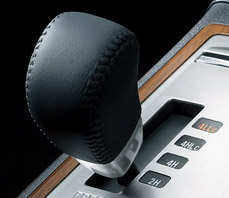 The Super Select 4WD II used in Pajero is a system that offers four shift on-the-fly driving modes. Drivers can choose between Full-time 4WD (4H), composed of a Viscous Coupling Unit (VCU) and center differential, Mitsubishi-Jeep full-fledged 4WD (4LLc), and rear-wheel 2WD (2H), which improves fuel economy and reduces noise.A smooth ride and reliable lever operation have been realized through an electrically operated shifting mechanism.
The Super Select 4WD II used in Pajero is a system that offers four shift on-the-fly driving modes. Drivers can choose between Full-time 4WD (4H), composed of a Viscous Coupling Unit (VCU) and center differential, Mitsubishi-Jeep full-fledged 4WD (4LLc), and rear-wheel 2WD (2H), which improves fuel economy and reduces noise.A smooth ride and reliable lever operation have been realized through an electrically operated shifting mechanism.
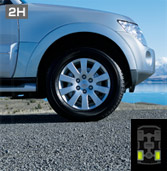
Rear wheel driving
Rear-wheel 2WD disconnects drive from the front wheel axle and brings fuel consumption and noise under control.
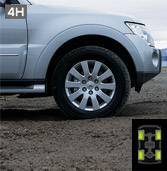
Front and rear unequal distribution (33%/67%) full time 4WD with center differential
VCU/Center Differential-type Full-time 4WD handles a wide variety of roads, from normal to icy. By controlling the driving force to the front and rear wheels based on road surface conditions, neutral cornering performance is achieved during high-speed cornering and slippery road conditions.
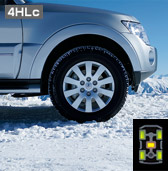
Direct drive 4WD (center differential lock)
Direct drive high-range 4WD locks the center differential to go the distance on sandy areas, deeply snowed streets, and rough roads.
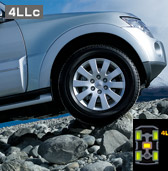
Low gear direct drive 4WD (center differential lock)
Direct drive low-range 4WD covers rocky stretches and muddy areas and is effective in getting out of tight spots.





